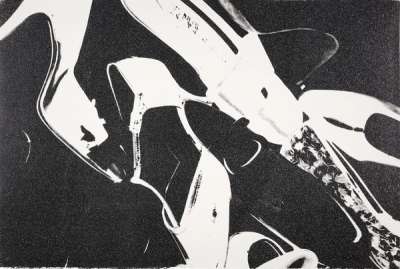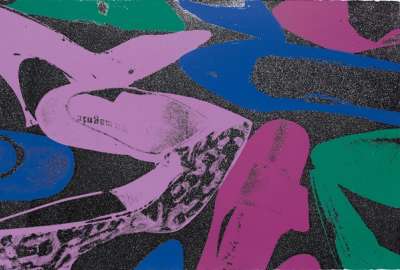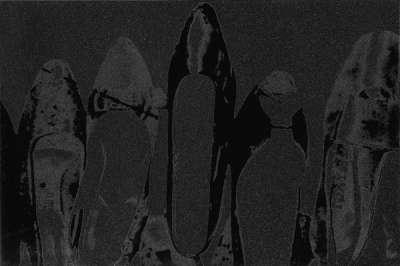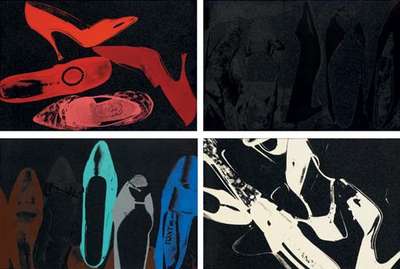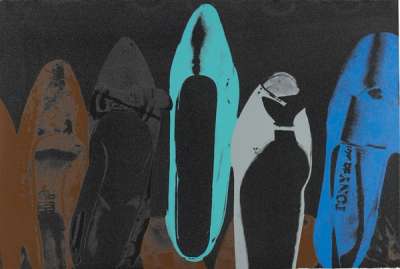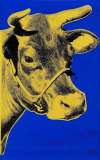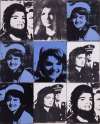Diamond
Dust Shoes
Andy Warhol’s 1980 Diamond Dust Shoes series evidences the impact that both his early career in advertising and his Studio 54 clubbing days had on his art. Reworking illustrations of heels created for notorious fashion magazines in the 40s-50s, Warhol adds a superlative expression of glamour— a sprinkling of diamond dust.
Andy Warhol Diamond Dust Shoes For sale
Diamond Dust Shoes Value (5 Years)
Works from the Diamond Dust Shoes series by Andy Warhol have a strong market value presence, with 68 auction appearances. Top performing works have achieved standout auction results, with peak hammer prices of £156250. Over the past 12 months, average values across the series have ranged from £30175 to £71266. The series shows an average annual growth rate of 5.48%.
Diamond Dust Shoes Market value
Auction Results
| Artwork | Auction Date | Auction House | Return to Seller | Hammer Price | Buyer Paid |
|---|---|---|---|---|---|
 Diamond Dust Shoes (F. & S. II.257) Andy Warhol Signed Print | 11 Nov 2025 | Nagel Auction | £59,500 | £70,000 | £90,000 |
 Diamond Dust Shoes (F. & S. II.256) Andy Warhol Signed Print | 24 Oct 2025 | Christie's New York | £29,750 | £35,000 | £45,000 |
 Diamond Dust Shoes (F. & S. II.252) Deluxe Edition Andy Warhol Signed Print | 22 Oct 2025 | Sotheby's New York | £34,000 | £40,000 | £60,000 |
 Diamond Dust Shoes (F. & S. II.254) Andy Warhol Signed Print | 15 Apr 2025 | Sotheby's New York | £34,000 | £40,000 | £60,000 |
 Diamond Dust Shoes (F. & S. II.253) Andy Warhol Signed Print | 27 Sept 2023 | Christie's London | £59,500 | £70,000 | £90,000 |
 Diamond Dust Shoes (F. & S. II.255) Andy Warhol Signed Print | 2 Nov 2021 | Rosebery's Fine Art Auctioneers | £59,500 | £70,000 | £80,000 |
 Diamond Dust Shoes (F. & S. II.253-257) (complete set) Andy Warhol Signed Print | 2 May 2007 | Christie's New York | £68,000 | £80,000 | £110,000 |
Sell Your Art
with Us
with Us
Join Our Network of Collectors. Buy, Sell and Track Demand
Meaning & Analysis
Diamond Dust Shoes is demonstrative of Warhol’s formative artistic years working in advertisement, drawing for Glamour, Vogue and Harper’s Bazaar. During his formative career he drew shoes for Glamour magazine, Vogue, Harper’s Bazaar and the I. Miller shoe company. These early images foreground Warhol’s draughtsmanship and innovative approach to colour and composition. His fashion and beauty magazine illustrations are celebrations of elegance and glamour. They also crucially demonstrate the artist embracing the power of the image in an era of growing consumerism, a concept that would become central to the Pop Art movement. In the 1980s, the artist returned to the subject of shoes when he was commissioned to produce images for fashion designer and friend, Roy Halston Frowick. Halston was a legendary figure, and the subject of a number of Warhol’s photographs and paintings. Warhol received a box of shoes and emptied the contents onto his studio floor. The artist took Polaroids of this spontaneous still life, and this formed the basis of the Diamond Dust Shoes paintings.
Diamond Dust Shoes is a stunning example of the artist’s late career ingenuity, in which he revisited his early subject matter. In 1979, he began the Retrospectives and Reversals series, reimagining subjects such as the Campbell’s Soup Cans and Electric Chairs. Warhol’s Diamond Dust Shoes continue the artist’s re-examination of his past work, yet, his chosen subject is recast in a distinctly late 20th century hue. Gone are the whimsical blotted line depictions of shoes, and in their place are clusters of shoes jostling for space, as if seen on a night club dance floor: doused in glitz and set against shadowy black backgrounds.
Why did Warhol use diamond dust? Ever the master of appropriation, Warhol borrowed the diamond dust method from Rupert Jasen Smith who, in 1977, Warhol named as his master printmaker and art director. Smith had been incorporating diamond dust particles into his work in order to enrich the surface of his paintings. The Diamond Dust Shoes series is the first body of work in which Warhol used the material in his screen printing process. After some experimentation with fine diamond dust powder, Smith sourced larger crystals of crushed glass for Warhol. The crystals are used to startling effect in the Diamond Dust Shoes paintings, maximising the reflective properties of the material and creating a relief surface. Conceptually the material carries connotations of glamour, luxury and expense. The material also references the milieu in which Warhol operated and the heady era of Studio 54, celebrity, disco and American consumerism.
Warhol elevates a simple consumer product, turning it into a portrait of beauty and glamour. Fascinatingly, the artist’s Diamond Dust Shoes can also be seen to canonise a subject that is central to Warhol’s identity and trajectory as an artist. It is interesting to note that in 1956 Warhol sent a shoe drawing, simply entitled Shoe, to the Museum of Modern Art in New York as a gift. The museum rejected the piece and requested the artist collect the drawing at his convenience.
Created in 1980, the Diamond Dust Shoes series shows Warhol returning to the subject that began his journey from successful commercial artist to globally renowned art superstar.

